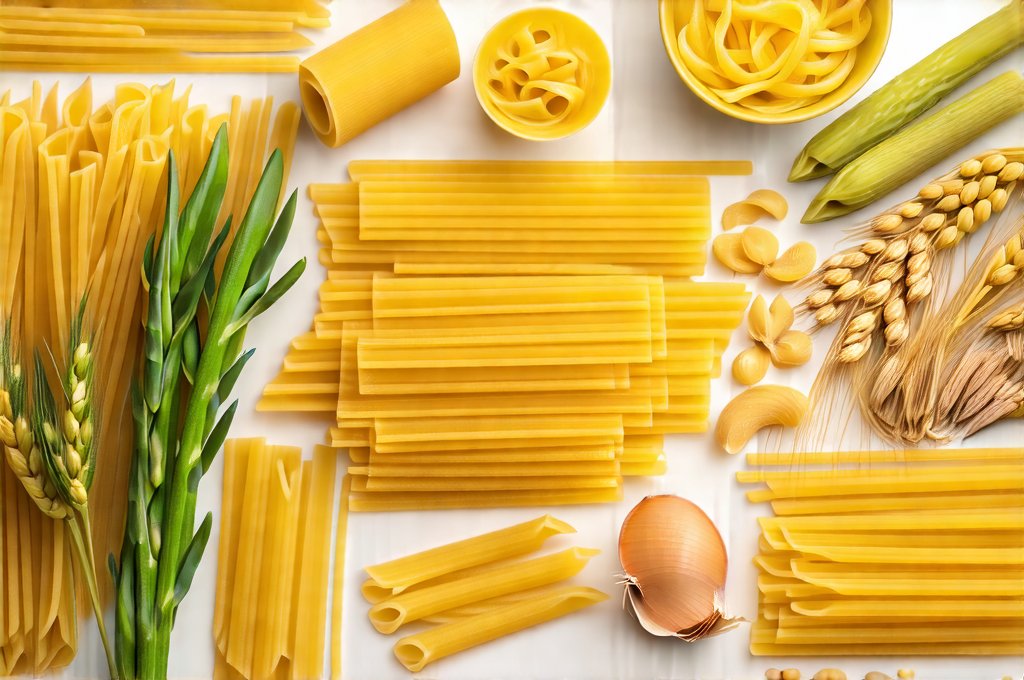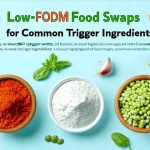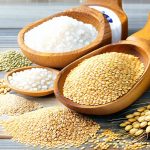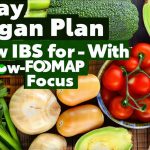Navigating dietary restrictions can feel like traversing a minefield, particularly for those managing Irritable Bowel Syndrome (IBS) or other digestive sensitivities. The low-FODMAP diet, developed by researchers at Monash University, offers a structured approach to identifying trigger foods and reducing gastrointestinal distress. However, it often requires significant adjustments to familiar eating habits, especially when it comes to staple carbohydrates like pasta and grains. Many traditional options are high in FODMAPs – fermentable oligosaccharides, disaccharides, monosaccharides, and polyols – leading individuals to seek suitable alternatives that don’t compromise on taste or texture. This article delves into the world of low-FODMAP pasta and grain choices, providing a comprehensive guide for those looking to enjoy satisfying meals without triggering digestive symptoms.
The challenge lies in understanding which grains and pastas naturally contain lower levels of FODMAPs, and which can be modified or substituted effectively. Simply eliminating all carbohydrates isn’t the solution; it’s about making informed choices that allow you to maintain a balanced and enjoyable diet. The goal is not permanent restriction but rather identification of personal triggers through an elimination and reintroduction phase guided by a healthcare professional. This article will focus on practical alternatives readily available, offering guidance on preparation methods and portion sizes to maximize tolerance and minimize discomfort. We’ll explore both naturally low-FODMAP options and strategies for adapting existing favorites.
Low-FODMAP Pasta Alternatives
Traditional wheat pasta is often problematic due to its fructan content – a type of FODMAP. However, several excellent alternatives exist that can satisfy your pasta cravings while adhering to the low-FODMAP diet. Rice noodles are a popular choice, particularly thin rice vermicelli or thicker rice noodles suitable for stir-fries and Asian-inspired dishes. They’re naturally gluten-free and low in FODMAPs, offering a light and delicate texture. Corn pasta is another promising option gaining traction, providing a more familiar al dente bite than some other alternatives. It’s made from corn flour, which is generally well-tolerated by those following the diet – however, always check the ingredient list to ensure it doesn’t contain any high-FODMAP additives like inulin or garlic powder. Beyond these, quinoa pasta and brown rice pasta are also viable options, though portion control is crucial as larger servings can become problematic due to their carbohydrate content. If you’re looking for ways to soothe discomfort while reintroducing foods, consider probiotic foods that can aid digestion.
It’s important to remember that even low-FODMAP pastas can cause issues if consumed in excessive quantities. Monash University provides helpful serving size guidelines on their app, which is a valuable resource for anyone following the diet. Furthermore, pay close attention to accompanying sauces and toppings; avoid ingredients like garlic, onion, honey, and high-fructose corn syrup, as these are all high in FODMAPs. Instead, opt for simple tomato-based sauces seasoned with herbs and spices, or pesto made with lactose-free ricotta and basil. Ultimately, finding the right pasta alternative is a matter of individual tolerance and experimentation. Understanding how food dyes can affect your gut sensation may also help you make more informed choices.
Grain Choices for Low-FODMAP Diets
While wheat is generally off-limits due to its gluten and fructan content, there’s still room for grains in a low-FODMAP diet. Rice – specifically white rice – is a cornerstone choice, being naturally low in FODMAPs and readily available. Brown rice, while more nutritious, contains sorbitol which can be problematic for some individuals; therefore, portion control is essential or choosing it during the elimination phase to assess tolerance. Quinoa, though technically a seed, is often used as a grain and offers a good source of protein and fiber. However, similar to brown rice, quinoa can contain moderate levels of sorbitol, so smaller portions are recommended. Sorghum is another lesser-known but excellent option; it’s naturally gluten-free and low in FODMAPs, offering a mild flavor and versatile texture.
Beyond these core options, millet and buckwheat (despite its name) are also suitable choices when consumed in moderation. Buckwheat noodles, specifically soba noodles made entirely from buckwheat flour (avoid blends with wheat), can be a satisfying alternative to traditional ramen or udon. It’s vital to read labels carefully, as many products marketed as “buckwheat” may contain wheat flour. Again, the Monash University app provides detailed information on serving sizes and FODMAP content for various grains, empowering you to make informed decisions about your diet. For those dealing with shifting schedules, understanding the combined effect of shift work on digestion can also be helpful.
Navigating Serving Sizes & Portion Control
Portion control is paramount when following a low-FODMAP diet, even with naturally low-FODMAP foods. This is because the gut’s sensitivity to FODMAPs varies significantly from person to person. What one individual can tolerate in moderate amounts may cause symptoms for another. The Monash University app provides detailed guidance on safe serving sizes for each food item, based on extensive research and testing. For example, while white rice is generally well-tolerated, consuming a very large portion – exceeding the recommended amount – could still lead to digestive discomfort.
- Start Small: Begin with smaller portions of new grains or pastas and gradually increase them as tolerated.
- Monitor Symptoms: Pay close attention to how your body responds after eating different foods. Keep a food diary to track any correlations between specific items and symptoms.
- Consider Individual Tolerance: Remember that these are general guidelines, and your personal tolerance may differ.
Understanding Label Reading & Hidden FODMAPs
Navigating supermarket aisles can be tricky when adhering to a low-FODMAP diet. Many seemingly innocuous products contain hidden sources of FODMAPs. It’s crucial to become adept at reading ingredient lists carefully and identifying potential triggers. Look out for ingredients like: – Garlic and onion (in any form, including powder) – Honey and high-fructose corn syrup – Inulin and chicory root – Fructans in wheat, rye, and barley – Sorbitol and mannitol
Even products labeled “gluten-free” aren’t necessarily low-FODMAP, as they may contain other problematic ingredients. Always double-check the ingredient list to ensure it doesn’t include any FODMAPs you’re trying to avoid. Furthermore, be mindful of cross-contamination during food processing and preparation; using separate cutting boards and utensils can help minimize exposure to high-FODMAP ingredients. It’s important to know signs that your gut bacteria are overfed, so you can adjust accordingly.
Reintroduction Phase & Personalized Dietary Adjustments
The low-FODMAP diet is not intended as a long-term solution but rather as a diagnostic tool. Once symptoms have subsided, the reintroduction phase – guided by a registered dietitian or healthcare professional – is crucial for identifying individual trigger foods and determining your personal tolerance levels. This involves systematically reintroducing small amounts of FODMAPs into your diet one at a time, monitoring for any recurrence of symptoms.
- Introduce One FODMAP at a Time: Focus on a single FODMAP group (e.g., fructans) for several days before introducing another.
- Start with Small Amounts: Begin with very small portions and gradually increase them if no symptoms arise.
- Keep a Detailed Food Diary: Record everything you eat, as well as any associated symptoms, to help identify trigger foods.
Through this process, you can build a personalized dietary plan that allows you to enjoy a wider range of foods without compromising your digestive health. The goal is not complete elimination but rather finding a balance between restriction and enjoyment. Learning about top foods that starve bad gut bacteria can also support this process. Finally, consider if probiotic drinks actually work.


















